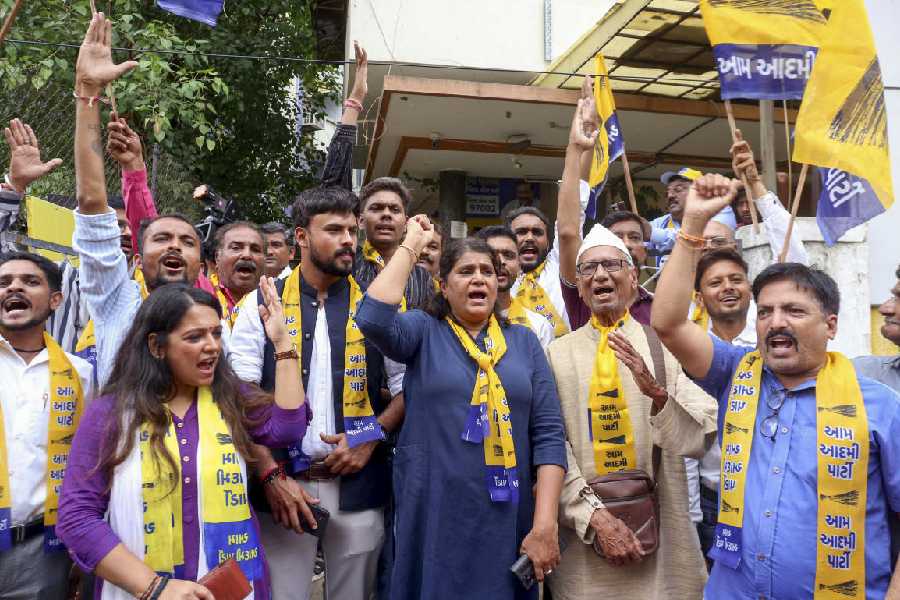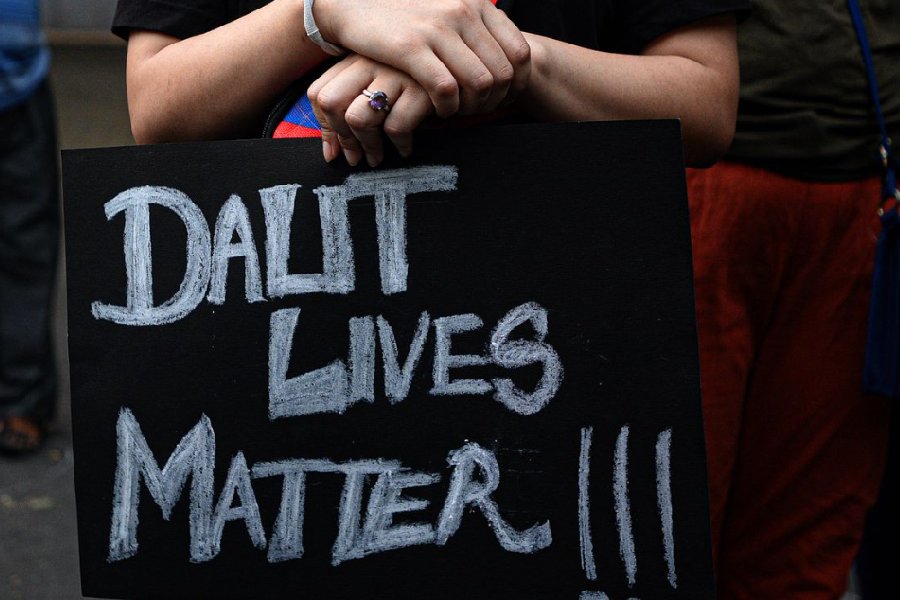 |
Feb. 24: Bengalis love to quibble — from the shape of the hilsa to the future of Mohun Bagan. That would mean almost on everything. As even a Nobel laureate is finding out, everything also includes famine.
Once, the filmmaker Satyajit Ray and the statistician Ashoke Rudra had verbal fisticuffs over the film Charulata. Rudra thought the film deviated from Rabindranath Tagore’s story on which the film was based. Ray denied it. But the arguments went on for over a year, much after the film ended its run at local theatres.
Sadly, like many things else, this quaint but endearing trait is missing in Bengal. Things, perhaps, are a-changing.
A Bengali physicist, who stays in Germany, has taken up cudgels against Amartya Sen — no less — and on — hold your breath — the Bengal famine.
Clearly no hausfrau, the physicist, Madhusree Mukerjee, quotes Mark Tauger, a Sussex-based British historian of moderate renown, to claim that Sen’s estimate of crop output can seriously be challenged. Sen in his book on famine argued that the Bengal famine of 1943 was avoidable and that there was enough food to go round.
Not quite, argues Mukerjee and quotes Tauger to claim that Sen based his estimates on projections and not actual production. She also says that diseases spread by wet weather appear to have reduced the harvest. In other words, the famine was not avoidable.
She continues undaunted: “Furthermore, in his paper Sen misquoted the government’s estimate of the rice shortfall as a mere 140,000 tons (instead of the 1.4 million tons stated in the document he cites) — which led him to mistakenly claim that the authorities could not have predicted famine.”
Sen possibly became aware of the tempest after a review of Mukerjee’s book, Churchill’s Secret War: The British Empire and the Ravaging of India During World War II, by Joseph Lelyveld appeared in The New York Review of Books, a well regarded American journal of ideas. Lelyveld, an experienced journalist who reported on the Bangladesh war for The New York Times, avoided taking a strong line.
Mukerjee’s observations were made in a letter she wrote in response to the review of her book. She was responding to reviewer Lelyveld’s comment that her book did not discuss Sen’s assertion that Bengal contained enough grain in 1943 to ward off the famine (which resulted because the British Raj’s policies denied the rural population access to the grain).
But, as an old Bengali proverb says, you twist the tail of the tiger at your peril.
“Madhusree Mukerjee seems satisfied with little information,” observed Sen tersely after the Review sought his comments.
“Mark Tauger’s data come from exactly two ‘rice research stations’,” he writes in rebuke, “from two districts in undivided Bengal, which had twenty-seven districts. Since weather variations have regionally diverse effects, it would require more than this to ‘seriously challenge’ the analysis I made, using data from all districts, which indicated that food availability in 1943 (the famine year) was significantly higher than in 1941 (when there was no famine). Ignoring the range of data I used in my study, she misdescribes my estimates as being based only ‘on projections’.”
Then comes the stiletto.
“On the other point mentioned by Mukerjee, she makes a story out of a typo in my quotation from a statement of the secretary of state for India, omitting to mention that the typo has not the slightest bearing on my assessment of the food situation. Moreover, even a ‘shortage’ of 1.4 million tons is a small proportion of the total crop of ‘60/70 million tons’ (as the secretary of state mentioned).
“The confounding issue, of course, is the idea of ‘shortage’ itself, as Lelyveld has noted. There was indeed a substantial shortfall compared with demand, hugely enhanced in a war economy, as I have described in detail, but that is quite different from a shortfall of supply compared with supply in previous years.”
“Mukerjee seems to miss this crucial distinction, and in her single-minded, if understandable, attempt to nail down Churchill, she ends up absolving British imperial policy of confusion and callousness, which had disastrous consequences.”
Contacted by The Telegraph, Lelyveld said he did not think “I need to inject myself into this debate. I don’t pretend to be an expert on the intricacies of colonial agrarian policies, crop statistics or consumption in Bengal during World War II”.
However, the veteran journalist showed that he too is a master at wielding the stiletto. “I don’t think Ms. Mukerjee, a vigorous and intelligent writer, is an expert in these areas either. She was ill-advised, it seems to me, to go after Amartya Sen in order to win a debating point with me. His answer more than adequately covers the point at issue,” Lelyveld said in an email.
Asked if he was amused by the debate, the journalist said: “I’d describe myself as interested rather than amused.”
Mukerjee, however, remains unrepentant. Crop data from Bengal in 1943, she maintains, is too unreliable to serve as proof of any claim.
 |
Mukerjee may have been on a slippery path but many in Bengal are more than delighted at the turn of events. Ashis Nandy, the Delhi sociologist, is unable to contain his pleasure.
“I am pleasantly surprised that Bengali intellectuals have begun to debate,” he says. Then adds wistfully: “Such things are rare now. Bengali intellectuals had come to believe that they should only debate ideological issues.”
To attempt to take on the Master himself — and on his home turf — brings back memories of the glory days. A Calcutta legend has it that two iconic Bengali men of letters, the historian Ramesh Chandra Majumdar and Nihar Ranjan Ray, who headed the Institute of Advanced Studies in Shimla, differed over the birth date of Rammohan Roy.
The difference was only a year or two.
When the spat went on for a few years, a younger historian tried to intercede. “If he had been born in 1772, he would have been a British lackey; if he was born in 1774, he still would have been a British lackey,” he said.
Both the elder academics declared him an idiot and went on with their battle. For his affront, the young man was denied a job in Jadavpur University.
Such stories have always fuelled the Bengali adrenaline.
But, like the jute industry and the indigo trade, quibbling all but disappeared from the Bengali life. Some feel one reason for this is the unipolarisation of Bengal, which has been ruled by the Left for over 30 years. “Bengal has become a state of mediocre intellect/scholarship that has been cultivated by the unipolarisation of the state.… Debate has never died down, it has been underplayed by various political machinery in the state,” said Sugato Marjit, the director of the Centre for Studies in Social Sciences.
Nandy agrees. “It is the Left that killed this tradition in Bengal because they knew all the answers, there was no questioning, there was no debate.”
Concurs Abhirup Sarkar, who teaches economics at the Indian Statistical Institute. “I agree with Prof. Nandy. I believe that the Left has a habit of starting with answers before the question is even asked. The decline of debate in Bengal is definitely related to the Left rule because they made a distinction among the intelligentsia, dividing them into ‘us’ and ‘them’. The intellectuals find it their responsibility to not say anything against the Left and those who don’t are protected by them — this has created a partisan kind of atmosphere that goes against free thinking,” said Sarkar.
But Ramachandra Guha, ever the heretic, has the last word. Bengali intellectuals, he says, go underground once in a while. However, he adds: “I think the Bengali intellectual never lost the appetite for debate or quibbling.”










